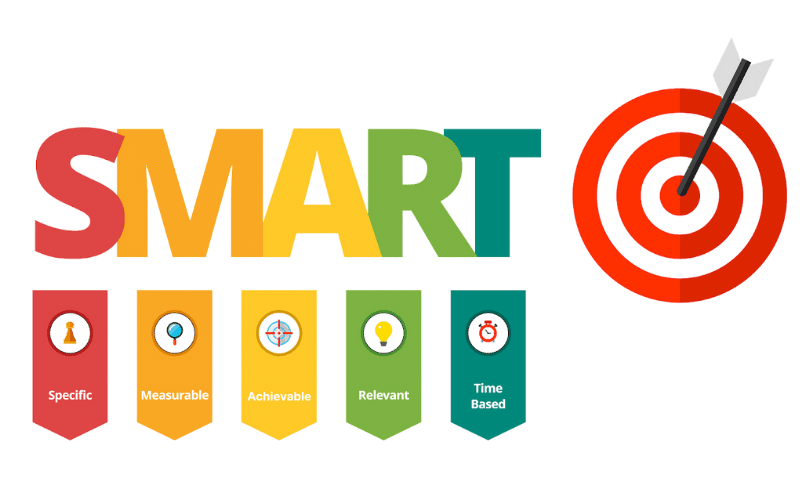Only 9% of companies rate their content marketing performance as excellent, despite 91% investing in it. Why? Because they skip the one step that turns random ideas into revenue rockets.
If you’re tired of pouring hours into blogs, videos, and social posts that vanish into the digital void, this guide is your antidote. We’ll show you how to create a content strategy that doesn’t just look good on paper but converts readers into customers and aligns every piece of content with challenging business goals.
By the end, you’ll know how to:
- Slash wasted effort by focusing on metrics that matter.
- Repurpose one piece of content into 5+ assets that dominate Google and social feeds.
No fluff. No jargon. Just proven tactics that work for small businesses and enterprises alike.
Ready? Set? Let’s get started.
Understanding Content Strategy
A content strategy isn’t just a plan; it’s your roadmap to creating content that works. Think of it as the bridge between your goals and your audience:
- No more guesswork: Every blog, video, or social post aligns with what your audience wants.
- No more wasted effort: It turns random ideas into a cohesive system that drives results.
Take Glossier, the beauty brand, for example. They didn’t just sell makeup. They built a cult following by turning customer reviews into blog posts and social content. Their strategy? Let their audience be the content.
Why It Matters
Without a strategy, you’re just throwing spaghetti at the wall, hoping some will stick. Many brands are like this, starting with generic content and following what everyone else does.
However, a shift can happen when they ditch the guesswork and adopt a hyper-targeted approach, deeply understanding their audience’s pain points and crafting content that speaks directly to those needs.
Want to get this done? Start by using tools like AnswerThePublic to mine unanswered questions in your niche.
To make the most of this tool, you need to master a secret, that is, agility.
Markets shift. Algorithms change. Airtight strategies crumble, but a flexible one thrives.
Your content strategy = Your content backbone.
It’s not a rulebook. It’s a framework for:
- Planning: What topics matter most right now?
- Creating: How do we make this resonate and rank?
- Iterating: Why did that viral post work? Let’s replicate it.
Here’s your takeaway: Repurpose ruthlessly. If a blog performs well, slice it into social snippets, record a podcast episode, or turn it into a downloadable checklist. The goal is to give their audience the same value in new formats.
Setting Clear Goals and Objectives
Forget vague aspirations like “get more traffic.” A content strategy without clear goals is like driving without GPS. You’ll burn fuel but never arrive. Let’s talk about SMART goals, the framework used by brands like SEOptimize LLC to turn “meh” content into revenue engines.
SMART isn’t corporate jargon. Let’s break down how it applies to real projects:

Education Walkthrough’s Teacher Coaching Blog
- Observed Strategy: Their blog focuses on actionable resources for educators (e.g., “How to Sustain Effective Programs After ESSER Funds Expire”).
- SMART Goal Example:
GOAL: Secure $50,000 in alternative funding (grants or donations) by Q4 2025 to replace 30% of expiring ESSER funds.
SPECIFIC: Apply to 5 grants targeting Title I schools or community education initiatives.
MEASURABLE: Track grant submissions and donation pledges monthly.
ACHIEVABLE: Assign a grant-writing team and leverage existing relationships with local businesses.
RELEVANT: Ensures program continuity for low-income student support.
TIME-BOUND: Complete applications by October 2025.
The Data Dividend
Without assuming results, here’s how Education Walkthrough could leverage data:
If their “teacher observation app” gets traffic but few downloads:
- Test placing the CTA above the fold vs. end-of-post.
- Analyze traffic sources (e.g., Pinterest drives clicks but few downloads? Optimize pin descriptions with “Download Now”).
SMART goals aren’t just targets. Each metric is a clue to refine, pivot, or scale. Collect data, but don’t forget to use it.
Identifying Your Target Audience
Generic advice is noise. Imagine scrolling through a post titled “How to Be a Leader.” It’s vague, forgettable, and does nothing for Jordan, a student hustling to stand out in college applications and launch a small business.
220 Leadership can cut through the clutter by speaking directly to Jordan’s goals:
- Blog posts such as “How to Lead a Team When You’re the Youngest in the Room” address the unique challenges of student entrepreneurs.
- TikTok tutorials break down skills like “Negotiating Your First Internship Salary” in under 60 seconds, perfect for Gen Z’s fast-paced learning style.
Buyer Personas: Your Audience’s DNA
A buyer persona is a detailed profile of your ideal customer, built from data and insights. For 220 Leadership, their persona might look like:

User Journey map
Tools like SparkToro can help you uncover where your audience spends time online so that you can focus there.
To build personas that work, do these:
- Audit top-performing content and add high-value incentives (e.g., free checklists) where engagement lags.
- Refine topics using quick surveys to capture evolving audience pain points.
- Go where your audience lives. Posting everywhere wastes energy. Double down on what works.
Now that you’ve pinpointed where and how to engage your audience, the next step is to take stock of what you already have. This is where conducting a content audit becomes your secret weapon.
Conducting a Content Audit
A content audit isn’t about judging your work; it’s more about spotting hidden opportunities. Take RX Fits, a leading Austin-based fitness brand, as our case study. Their blog is packed with actionable guides like “The Ultimate Natural Appetite Suppressant for Weight Management” and “Back Pain Relief for Busy Executive Women.” But how do they ensure every post punches its weight? The answer: ruthless content audits.

Here Is How To Lift Your Audit Game:
- Build Your Content Inventory – Start with a spreadsheet listing every blog, video, or guide. Keep it simple by tracking metrics. Next, check for broken links and missing meta descriptions and fix them.
- Map the journey, not just the content.
- Don’t waste effort. Repurpose thriving content into Instagram reels, Pinterest infographics, or email series.
As you regularly trim the fluff, you keep your strategy relevant and focused on what your audience wants.
Proven Formats + When to Use Them
- Blog Posts: Ideal for establishing authority, improving on-page SEO, and content repurposing.
- Videos: Short-form videos (e.g., TikTok, Instagram Reels) hook younger audiences with quick, entertaining clips. Long-form videos (e.g., YouTube, webinars) dive deep into complex topics or product demos.
- Email Newsletters: Best for nurturing leads with curated tips, product updates, or exclusive offers. Segment your list based on personal interests to avoid generic blasts.
- Podcasts: Perfect for busy audiences who consume content on the go.
Emerging Trends to Watch
- AI-Generated Content: Tools like Perplexity can brainstorm ideas or draft outlines, but always add a human touch to maintain authenticity.
- Interactive Content: Quizzes and polls can boost engagement sporadically.
Remember: Platform matters. A LinkedIn article should be formal and data-driven, while an Instagram reel should thrive on trends. This way, you can maximize engagement and achieve your content marketing objectives.
Developing a Content Calendar

Just as a successful campaign requires careful planning and execution, a content calendar ensures that every piece of content is published at the right time and resonates with your audience.
Without a calendar, you risk inconsistency in posting schedules and missed opportunities for engagement.
What Should Your Content Calendar Include?
To maximize its effectiveness, your calendar should detail:
- Content Format: Specify whether it’s a blog post, video, infographic, or social media post.
- Topic: Define the focus of each piece to ensure alignment with your strategy.
- Target Audience: Tailor content to specific personas or audience segments.
- User Journey Stage: Map each piece to awareness, consideration, or decision stages.
- Deadlines and Publishing Dates: Include creation deadlines and publication schedules to stay on track.
- Responsible Creator: Assign tasks to team members for accountability.
Best Practices for Building Your Content Calendar
- Plan Around Key Events: Schedule content around holidays, industry milestones, or product launches to capitalize on timely opportunities.
- Incorporate Evergreen Content: Ensure your calendar includes timeless pieces that remain relevant long-term. This provides consistent value to your audience while reducing the pressure of constant creation.
- Include Calls-to-Action (CTAs): Every piece of content should guide your audience toward the next step, whether it’s subscribing to a newsletter or making a purchase.
Tips for Maintaining Your Content Calendar
- Stay Flexible: Build in room for spontaneous updates or trending topics that can boost engagement. Social media moves fast; don’t let rigid schedules hold you back from capitalizing on timely opportunities.
- Regularly Update Your Calendar: Revisit your calendar weekly or monthly to reflect changes in strategy, audience preferences, or performance insights using analytics.
- Collaborate Effectively: Make the calendar accessible to all stakeholders and encourage feedback from team members involved in content creation and distribution.
These practices not only help you create a unique content calendar but also drive measurable results.
Creating High-Quality Content
Let’s be honest: Anyone can publish content. But creating content that sticks and keeps people coming back is an art!
The secret? Your brand voice. And this is not just about “how you sound.” It’s your content’s personality. Imagine your brand as a person. Are you a friendly neighbor who explains complex topics in simple terms? Or the expert mentor who backs every tip with data? Nail this down first.
How? A content style guide: the cheat sheet for your team that helps you stay consistent.
Great content does two things: it informs and engages. It answers questions your audience didn’t even know they had. But here’s the kicker: Even the best advice falls flat without polish. So consider the following:
- Use clean images, infographics, or short videos that show what you’re explaining.
- Ditch jargon. Write like you’re explaining something to a friend. For example, instead of “Leverage synergistic solutions,” try “Use tools that work well together.”
- Talk with your audience, not at them. Ask open-ended questions and use their answers to shape future content.
Test, tweak, repeat.
But even the pros guess wrong sometimes. That’s why testing your content against your audience personas is key.
Does “5 SEO Hacks” perform better than “SEO Secrets No One Tells You”? Also, if your “ultimate guide” has a high bounce rate, maybe it’s too long or not answering the right questions.
Before hitting “publish,” ask, “Would I share this with a friend?” If the answer’s no, revise.
Content Governance
Content governance refers to the set of guidelines and processes that manage how an organization creates, publishes, and maintains its digital content. It ensures that all content is of consistently high quality and aligned with the organization’s goals.
Why Governance Matters
- Consistency: Ensures content remains uniform across teams and channels, reinforcing your brand identity.
- Efficiency: Streamlines content workflows by identifying opportunities to automate and optimize processes.
- Quality: Provides writers with editorial guidelines and messaging frameworks to maintain accuracy and relevance.
Since content governance is so important in ensuring that all content aligns with your business objectives, creating guidelines for tone, style, and updates becomes non-negotiable.
What then is the hack?
- Define Your Voice: Determine whether your brand should sound friendly and casual or professional and formal.
- Set Language Rules: Decide on grammar and formatting standards (e.g., use active voice, avoid jargon).
- Schedule Regular Reviews: Refresh outdated content quarterly to keep it relevant.
- Use Tools: Implement a content management system (CMS) to track updates and revisions.
- Educate teams on governance policies to ensure alignment.
It’s important to note that these recommendations should be tailored because each type of organization faces unique challenges in implementing content governance. Small businesses often need to streamline processes with limited resources, while enterprises must manage complex, multi-channel content operations.
Let’s streamline it much more.
For Small Businesses:
- Keep It Simple: Focus on core messaging and tone.
- Use Free Tools: Leverage free collaboration tools like Google Docs for style guides.
- Review Often: Regularly check for consistency across platforms.
For Enterprises:
- Centralized Governance: Assign a dedicated team to oversee content governance.
- Automate Processes: Use software to streamline content workflows and approvals.
- Conduct Quarterly Audits: Ensure all content aligns with evolving brand strategies.
So, take the first step today and start crafting a governance model that aligns your content with your vision.
Optimizing Content for SEO
SEO is not tricking Google; it’s helping it understand and love your content. Here’s how:
Clean URLs
Avoid messy links like “blog/post?id=123.” Instead, use clear, keyword-rich URLs:
- Bad: /fitness-tips-2023
- Better: /how-to-stay-fit-without-a-gym
Alt Text Basics
Describe images plainly so Google (and screen readers) get the context:
- Lazy: fitness-image.jpg
- Better: woman-doing-yoga-at-home.jpg
Titles and Descriptions
Hook readers in 60 characters or less:
- Bland: “Healthy Recipes”
- Clickable: “5 Cheap Meal Prep Hacks for Busy Weeknights”
Link Smart
Link to trusted sites to boost credibility.
Organize Your Site
Group-related content. For example:
- /nutrition/meal-prep-guides
- /workouts/home-routines
Optimize Images
Use high-quality photos, but compress them with tools like Squoosh to avoid slowing your site.
Let AI Help (Not Replace You)
Tools like SurferSEO can help suggest keywords or headers, but nothing beats that human touch.
Never Stop Tuning
Check Google Search Console monthly. If a post drops in rankings, update it with fresh info.
The Golden Rule:
Google’s smarter than ever. Write for people first. If your content solves a real problem, SEO will follow. Ask: “Would I click this if I were bored at 2 AM?” If yes, you’re good to go.
Read Also: Surprising Benefits of SEO You Never Knew Existed
Distributing Content Across Channels and Measuring Performance
Content distribution is the process of sharing your content across various channels to reach a wider audience. It involves using owned (e.g., website, social media), earned (e.g., social shares, guest posts), and paid (e.g., Google Ads, sponsored content) channels to maximize reach and engagement.
To know whether your content is performing well, you should consider using tools such as Google Analytics to track metrics such as bounce rates, time on page, engagement, user behavior, and conversion rates. These insights help refine your content strategy by identifying which channels and formats resonate best with your audience.
Not just that. You should also:
- Track Engagement: Views, likes, shares, and comments on social media.
- Monitor SEO Metrics: Organic traffic and keyword rankings.
Based on performance data, adjust your distribution channels and content types to improve SEO and engagement for overall content effectiveness.
Read Also: SEO: Dead or Evolving? The Truth Behind the Trends
Final Note
After all has been said, creating a successful content strategy is not toys and games. It involves defining SMART goals, understanding your audience, crafting a cohesive narrative across channels, producing high-quality, engaging content that resonates with your audience and driving business results.
These things can be overwhelming. But there’s good news.
At SEOptimize, our expert team can help you develop a tailored approach that boosts engagement, improves SEO, and aligns with your business objectives.
Ready to transform your content strategy?
